Interested in learning about the Functions of a Heat Pump? A Heat Pump’s functioning principle and uses may be found here at Linquip. In search of a place to purchase Heat Pump Equipment? Visit Linquip’s Heat Pump For Sale, where you can see a complete list of all Heat Pump Products depending on your needs and application.
For your convenience, Linquip also provides a list of Heat Pump Suppliers and Companies from which you may select the best one. Linquip has a wide variety of Heat Pump Manufacturers who can help you discover the right equipment for your application. The best Heat Pump Service Provider businesses can also manage your industrial equipment service activities, such as the installation, maintenance, and repair of your industrial equipment.
The best mini split heat pump function is actually to monitor the temperature in rooms or zones. Mini split heat pumps are also called “ductless” since they do not have any ductwork. In this guide at Linquip, you will find out the best mini-split heat pump for cold weather, what a mini-split heat pump is, and how it works.
⇒ View a List of Heat Pump for Sale and Their Suppliers ⇐
List of 8 Best Mini Split Heat Pump for Cold Weather in 2024
According to the factors that we will mention in this article, Here is the List of 8 Best Mini Split Heat Pump for Cold Weather in 2024:
- DAIKIN Mini Split Heat Pumps Buy Now
- MITSUBISHI Mini Split Heat Pumps Buy Now
- LG Mini Split Heat Pumps Buy Now
- FUJITSU & RUUD Mini Split Heat Pumps Buy Now
- Cold Climate Heat Pumps Buy Now
- Pioneer WYS Series Mini Split Heat Pump Buy Now
- Gree LIVO+ Mini Split Heat Pump Buy Now
- MrCool DIY Series Mini Split Heat Pump Buy Now
How We Picked the Best Mini Split Heat Pump for Cold Weather
Mini split heat pumps are an excellent choice for cold weather because they are cost-effective and flexible. They are also energy-efficient and can save you money on your heating bills. At Linquip, we understand the importance of choosing the right mini-split heat pump for your needs. That’s why we analyzed more than 10 web pages and reviews to select the best mini split heat pumps for cold weather.
Our selection process was based on several factors, including device efficiency, heating power, temperature fluctuations, energy consumption, and infrared sensors. We also considered brands such as Daikin, Mitsubishi, LG, Fujitsu, and Ruud that have developed high-quality items in heating and cooling over the past 40 years. We believe that our selection of mini split heat pumps will provide you with a reliable and cost-effective heating system that will keep you warm during cold winter days.
Device efficiency is one of the most important factors to consider when selecting a mini-split heat pump for cold weather. The efficiency of a device is measured by its SEER (Seasonal Energy Efficiency Ratio) rating. The higher the SEER rating, the more efficient the device is. Heating power is another important factor to consider. A device with higher heating power will be able to heat your room faster and more efficiently.
Temperature fluctuations are also an important factor to consider when selecting a mini-split heat pump for cold weather. A device that can maintain a consistent temperature in your room will be more efficient than one that cannot. Energy consumption is another important factor to consider. A device that consumes less energy will save you money on your heating bills.
Infrared sensors are also an important feature to consider when selecting a mini split heat pump for cold weather. These sensors can detect when someone is in the room and adjust the temperature accordingly. This feature can help you save money on your heating bills by only heating your room when someone is in it.
Installation and Maintenance Requirements: In our selection process, we also considered the ease of installation and maintenance requirements of each mini split heat pump. For cold weather applications, it’s crucial that the installation is done correctly to ensure maximum efficiency and performance. We favored models that offer straightforward installation procedures, potentially reducing the need for costly professional services. Additionally, units with simpler maintenance needs were given preference, as regular upkeep is vital for long-term efficiency and reliability in cold climates.
Customer Service and Warranty: Lastly, we evaluated the level of customer support and warranty options provided by the manufacturers. Reliable customer service is crucial, especially in scenarios where technical guidance is needed. A robust warranty not only reflects the manufacturer’s confidence in their product but also provides peace of mind for the consumer. Models backed by strong warranties and responsive customer support were rated higher, as they assure assistance in case of any issues or malfunctions, especially important in regions experiencing harsh winter conditions.
What is a Mini Split Heat Pump?
A mini split heat pump can replace your primary heating system or complement your current heating system because it is the cheapest to use. Because mini-split heat pump systems do not require ductwork, they are suitable for single-room additions or homes without ducts. They, moreover, offer flexible design.
Mini Split Cold Weather Performance
About the mini split cold weather performance, it is clear that it takes heat from the environment and transfers it to heat the home indoors or moves it to cool the house outdoors. It includes indoor and outdoor equipment. The condensing / compression unit applies pressure, which is then distributed through lines connected to the interior. The indoor unit has three components: air handlers, blowers, and the evaporator coil.
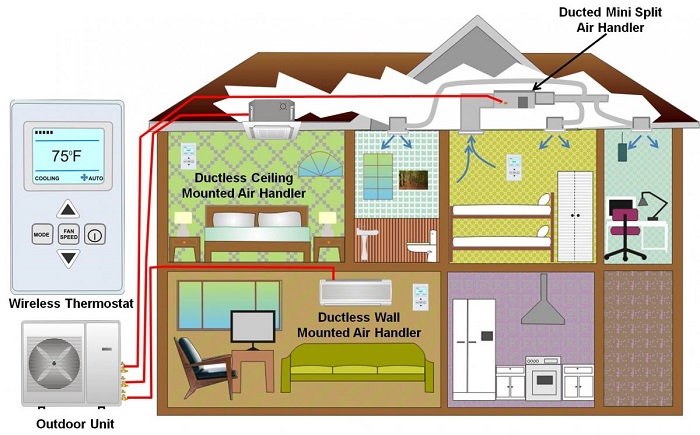
In several areas, including walls and ceilings, air-handling units can be placed inside the home. The quiet indoor unit is mounted high on a wall or ceiling and is controlled by remote control. Meanwhile, the condenser remains open.
The components are connected by tubes. Such tubes are typically flowing through the wall in a hole mostly three inches wide, and all line sets plus electrical wiring connecting the two components passed through that hole. The tubing is circulated by an environmentally friendly refrigerant that plays a key role in providing warmth to the indoors.
Once mounted, the heat pump and air-conditioner are turned on, warm air is drawn from outside the home and the heat in the air is drawn and pumped into your rooms by the air handler as the air passes through the refrigerant. The cool air from which heat was drawn is dumped outside the house in the meantime.
What is the Best Mini Split Heat Pump For Cold Weather?
When cold weather arrives, it is time to ensure that your cold winter days are warmer with a reliable, cost-effective heating system. With a mini split heat pump, a more flexible positioning, lower heating cost, and simpler set-up have some important advantages over a conventional system. There are several brands available to choose the best mini split heat pump for cold weather. Here, we will mention some of them briefly.
1. DAIKIN Mini Split Heat Pumps
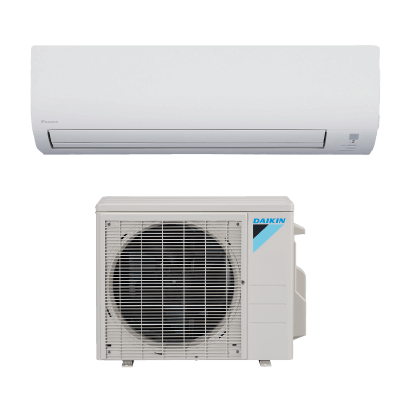
Specifications
| Capacity (BTU) | 9,000 – 24,000+ |
| SEER Rating | Up to 23 |
| HSPF Rating | Up to 12.5 |
| Noise Level | As low as 19 dB |
| Special Features | Wi-Fi, Air Purification |
Daikin is a well-known Japanese brand because of its high device efficiency. Searching for the best mini split heat pump for cold weather, it is certainly a good brand to try. Daikin heat pumps use heat pumping technology that enables the heat pump to adjust to the heating power of the room. They decrease indoor temperature fluctuations and energy consumption. Also, they have an infrared sensor that detects motion and activates energy-saving mode when the room has been empty for 20 minutes empty.
2. MITSUBISHI Mini Split Heat Pumps

Specifications
| Capacity (BTU) | 6,000 – 30,000+ |
| SEER Rating | Up to 33 |
| HSPF Rating | Up to 13.5 |
| Noise Level | As low as 19 dB |
| Special Features | Hyper Heat, Wi-Fi |
Mitsubishi is regarded as a pioneer in mini-split cooling and heating. Within this brand, some units have electric belt heating that provides faster heat at startup and increases the system’s performance in freezing climates. Moreover, systems automatically restart after a loss when the power returns.
3. LG Mini Split Heat Pumps
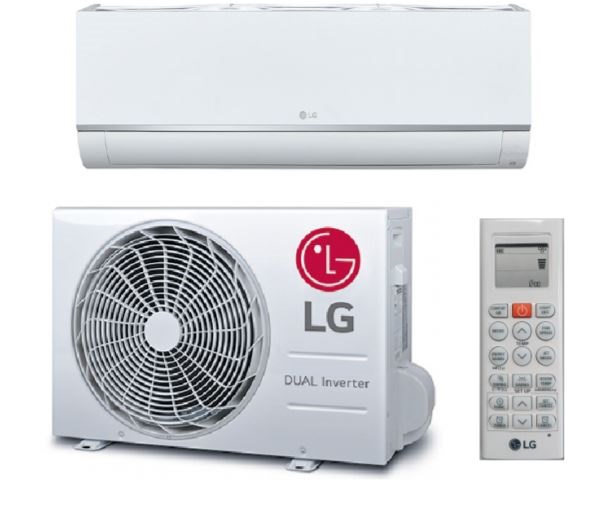
Specifications
| Capacity (BTU) | 9,000 – 24,000 |
| SEER Rating | Up to 22 |
| HSPF Rating | Up to 11.5 |
| Noise Level | As low as 22 dB |
| Special Features | ThinQ Technology, Energy Saving |
Another best mini split heat pump in cold weather is LG. It is interesting to know that this is a kind of mini split, and Wi-Fi is available for the system. Several systems have already mounted a drainage pan heater. And the LG red high-efficiency series operates at full efficiency up to -5 ° F.
4. FUJITSU & RUUD Mini Split Heat Pumps
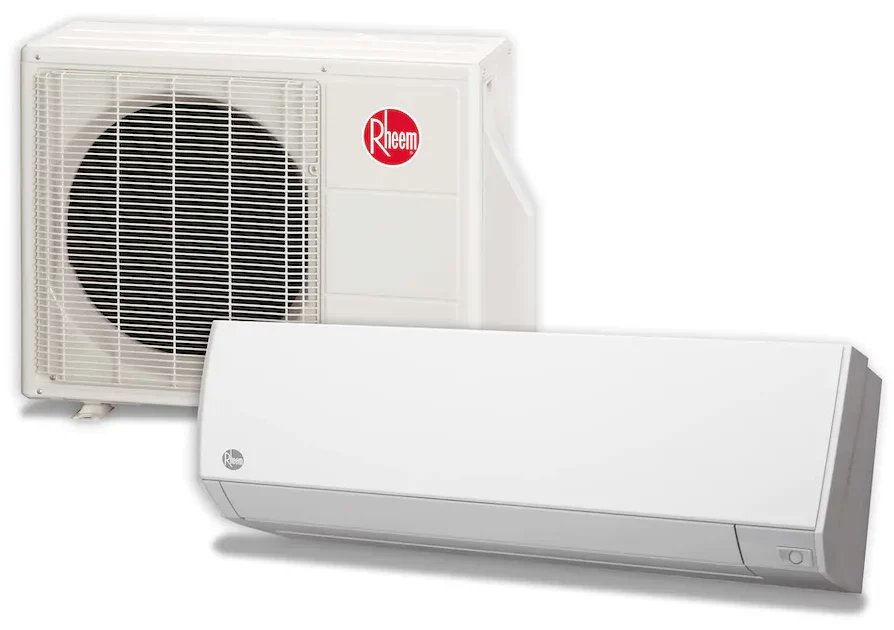
Specifications
| Capacity (BTU) | 9,000 – 24,000+ |
| SEER Rating | Up to 25.5 |
| HSPF Rating | Up to 12 |
| Noise Level | As low as 21 dB |
| Special Features | Inverter Technology, Wi-Fi |
Last but not least, the best mini split heat pump for cold weather is Fujitsu which has developed high-quality items in heating and cooling over the past 40 years. It is now a manufacturer for Ruud, a maker of American HVACs. The mini split heat pump made by this company has several features, including numerous design choices and models; each unit has its thermostat, so when a room is unoccupied there is no need to run the device.
5. Cold Climate Heat Pumps
Specifications
| Capacity (BTU) | Varies, suitable for cold climates |
| Energy Efficiency (SEER/HSPF) | Enhanced for cold climates |
| Inverter Technology | Yes |
| Noise Level (dB) | Generally Low |
| Additional Features | Cold Weather Efficiency, Smart Features |
An Inverter-driven, mini split heat pump that can comfortably heat a house when outside temperatures are as low as -15 °F is a cold climate heat pump. It heats and cools the home at a fraction of the cost of traditional heating and cooling systems. These highly effective and quiet heat pumps work together with your existing heating system, even at a temperature lower than zero to heat your home comfortably.
Cold climate heat pumps allow cool spaces to cooler and warm spaces to warmer by using energy to transfer heat from cool spaces to warm spaces. Because heat is transmitted instead of produced, cold-climate heat pumps may supply up to three times the amount of energy they consume. This ensures that heat can be distributed more effectively and cheaper.
6. Pioneer WYS Series Mini Split Heat Pump
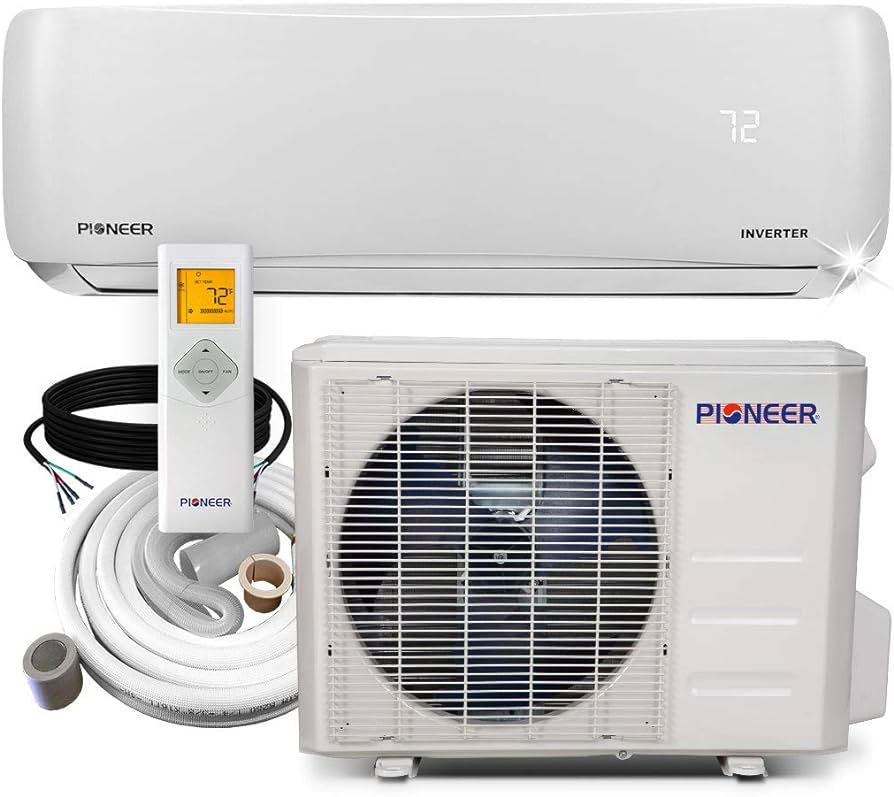
Specifications
| Capacity (BTU) | Ranges from 9,000 to 36,000 |
| SEER Rating | Up to 19 |
| HSPF Rating | Up to 10 |
| Noise Level | As low as 25 dB |
| Special Features | Wi-Fi connectivity, Auto Restart, Timer Function |
The Pioneer WYS Series Mini Split Heat Pump is recognized for its balance of efficiency, affordability, and reliability. Ideal for residential and light commercial applications, the WYS series offers both heating and cooling functionalities. These units are known for their easy installation and user-friendly operation, featuring a variety of programmable settings and remote control operation. Pioneer mini splits are also appreciated for their quiet running noise and energy efficiency, making them suitable for bedrooms, living rooms, and small offices.
7. Gree LIVO+ Mini Split Heat Pump
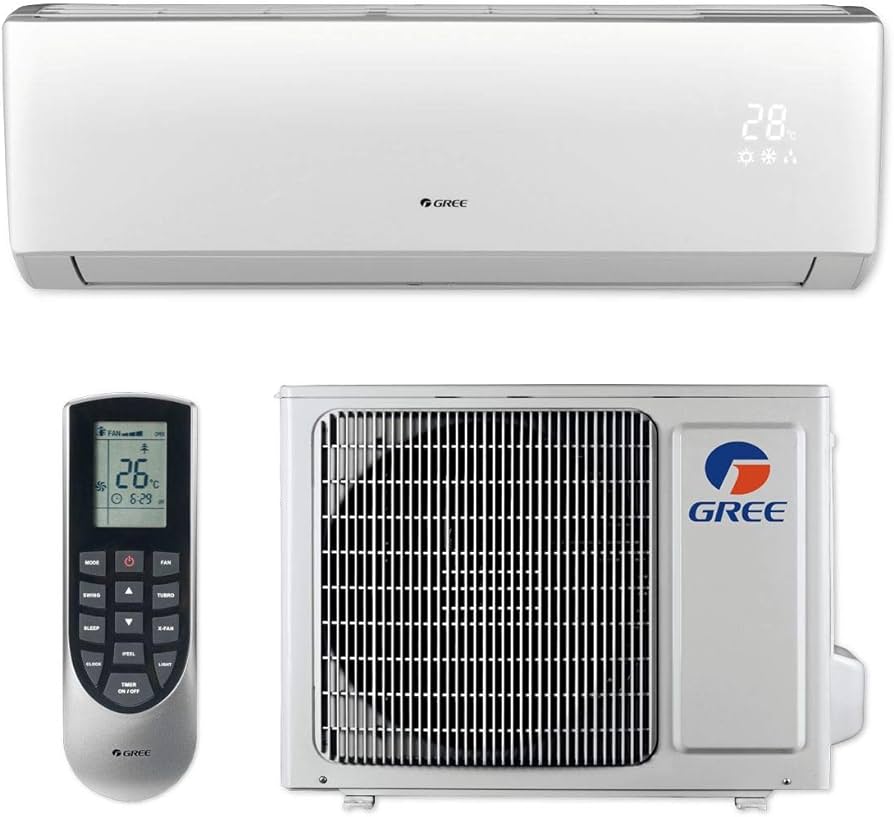
Specifications
| Capacity (BTU) | Ranges from 9,000 to 30,000 |
| SEER Rating | Up to 28 |
| HSPF Rating | Up to 12 |
| Noise Level | Around 19-30 dB |
| Special Features | Wi-Fi enabled, 4-Way Air Flow, I Feel mode for precise control |
Gree LIVO+ Mini Split Heat Pumps are renowned for their advanced technology and superior performance. Known for high energy efficiency and powerful operation, the LIVO+ series is suitable for both residential and commercial settings. These units come with features such as Wi-Fi control, multiple fan speeds, and an environmentally friendly refrigerant. Gree is a global leader in air conditioning technology, and its LIVO+ series is a testament to its commitment to quality and innovation.
8. MrCool DIY Series Mini Split Heat Pump
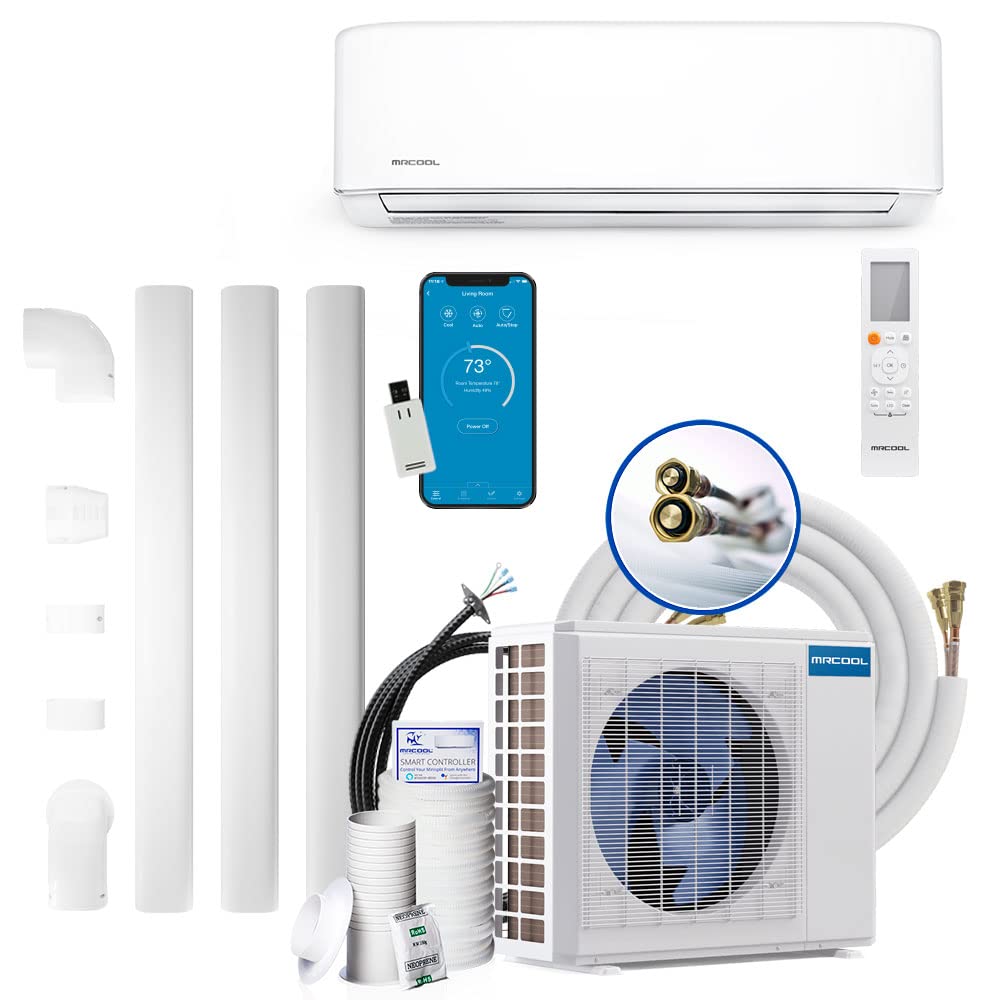
Specifications
| Capacity (BTU) | Ranges from 12,000 to 36,000 |
| SEER Rating | Up to 22 |
| HSPF Rating | Up to 10 |
| Noise Level | Approximately 25-40 dB |
| Special Features | DIY installation, Wi-Fi enabled, Low Ambient Cooling |
The MrCool DIY Series is unique in the mini split market for its DIY-friendly installation approach. Targeted towards homeowners who prefer a hands-on approach, these units come with a pre-charged line set and can be installed without specialized tools or professional HVAC knowledge. The DIY series offers efficient heating and cooling with smart features like Wi-Fi connectivity, making it a popular choice for those looking to install the unit themselves.
Mini Split Cold Climate Air Source Heat Pump
More about picking the best mini split heat pump for cold weather, we have the mini split cold climate air source heat pump which is like a heat sponge: it collects heat from the outside air and transfers it to your house. As it uses outside air, it operates particularly well at moderate temperatures. But if temperatures fall below 32 ° F, it is not effective anymore. For comfort and energy use, however, the proper operation of an air source heat pump is necessary. Although successful in cold weather, a mini-split cold climate air source heat pump also needs additional heat during subzero days.
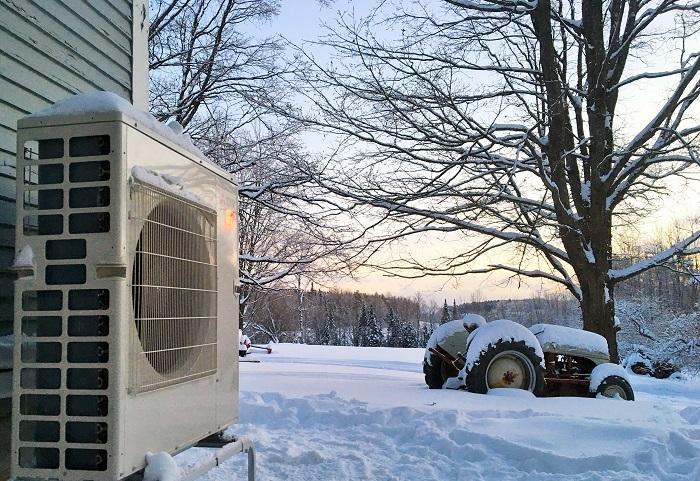
What is the Difference Between a Heat Pump and a Mini Split?
Heat pumps transfer heat rather than produce it, resulting in higher energy efficiency. Heat pumps use less energy than typical split systems since they are driven by electricity. Individual room manipulation and continuous adjustment with auto heat and cool control are possible with split systems.
Do Mini Splits Use a Lot of Electricity?
Mini-splits use significantly less electricity than central air conditioning and heating systems, making them an energy-saving option. The majority of them use around 600 watts each hour. Energy consumption, on the other hand, fluctuates based on usage, temperature settings, and unit condition.
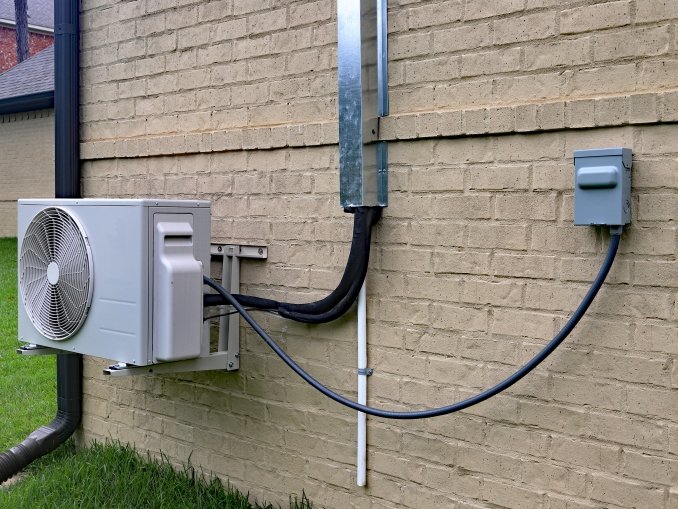
FAQs about Mini Split Heat Pump for Cold Weather
- Should I leave my Mini Split on All the Time?
When your mini split isn’t switched off much of the time, it’s all right. The mini-split slows the process and thus raises the heat output to several times instead of turning it off. The mini-split consumes less energy. During winter, when temperatures drop dramatically early in the day only to return in the afternoon, your mini split will be operating at different levels. In the coldest part of the day, it will have more heating and then less heating if not quite cool. That can make your mini-split run longer than normal, but it’s okay. How long the device can adjust even in the heat can change. This is linked to the coefficient of performance (COP) of the mini-split method. In this case, the COP will tell you how much you need to cool your mini-split to keep your home comfortable in warmer weather.
- How Long Does Mini Split Last?
Mini-splits can last decades to provide reliable indoor comfort and safe, cost-effective, and energy-efficient operations for homes (including any best mini-split heat pump for cold weather) if you manage them well. In contrast with traditional heating or cooling systems, mini-split pumps generally last longer because there are no ducts. However, the efficiency of the heat pump depends greatly on its regular servicing and quality.
- Do I Need a mini split for Every Room?
If a single mini-split device has a proper size, the building envelopes and airflow will heat or cool down to 1500 square feet or even higher. If your home doors are left open, the temperature control can be more even, and even older homes with more rooms can be very comfortable thanks to a ductless heat pump system. When your home is poorly insulated and already loses lots of water, every device will work hard, and you will certainly encounter hot or cold spots. However, if your home has been weathered and has sufficient airflow, the average size home of 1,300 m2 in both winter and summer can be easily maintained with a single mini-split device. For home heating, one heat pump is typically needed per room or one multi-zone set-up.
- Do mini-split heat pumps work in cold weather?
The answer is yes. Mini split heat pumps can work in cold weather. However, they operate effectively only if a heat source such as a gas furnace or electrical resistance coils has been used.
- Do mini splits heat below freezing?
When temperatures are below a specific level, mini-splits cannot work effectively. They use more electricity to heat the house properly, thus increasing the energy consumption. The optimal temperature range for conventional mini split heat pump operation is over 25-30 degrees Fahrenheit. As the temperature goes down to 40 degrees, the heat pump starts to lose efficiency and is no longer the most efficient heating method once the temperatures go down to 25 to 30 degrees. However, the mini split does not go useless when temperatures fall to freezing and below; it still works. It requires much more power but usually fails to keep the temperature stable indoors because of the heat that cannot be moved outside.
Final Words
In recent years, the mini split heat pump technology has advanced to make it perfect in cold climates. As you can see any best mini split heat pump is an excellent source of supplementary heating. Learning the facts about these systems and how they perform will help you understand how they are correctly configured and how your new system doesn’t cost more than you need. However, you can leave your comments on this article at Linquip if you have any questions about picking the best mini split heat pump for cold weather.
Download The 8 Best Mini Split Heat Pump for Cold Weather in 2024 PDF
You can download this article as a PDF so that you can access it whenever you like.
Watch Videos about the Best Mini Split Heat Pump for Cold Weather in 2024
For more information about Best Mini Split Heat Pump for Cold Weather in 2024, watch this video about Best Mini Split Heat Pump for Cold Weather in 2024.
Buy Equipment or Ask for a Service
By using Linquip RFQ Service, you can expect to receive quotations from various suppliers across multiple industries and regions.
Click Here to Request a Quotation From Suppliers and Service Providers
Read More on Linquip
- Types of Heat Exchangers: An Introduction to All Essential about Specifications
- Best Check Valve for Sump Pump: 9 of the Best Models
- Heat Pumps vs Air Conditioners: The Everlasting Battle
- Heat Exchanger vs. Chiller: Which One is the Best for You?
- Difference Between Heat Exchanger and Condenser: A thorough guide
- Heat Exchanger Efficiency Calculation & Equation
- Tubular Heat Exchangers: Usage & Working Principle
- What is Coil Heat Exchanger? Design Example
- Advanced Guide: What Is Tube In Tube Heat Exchangers
- Understanding Heat Pumps in Winter: How Do They Work?
- Types of Plate Heat Exchanger: Different Types with Wide Use
- Working Principle of Plate Heat Exchanger
- Parts of Oil Pump
- Centrifugal Pump Working Principle with Diagram
- 3 Types of Heat Pump + Working Principle
- 16 Parts of Heat Pump and Functions
- Types of Pump Casings (In Centrifugal Pumps & Others) + Pros & Cons
- Heat Pump Efficiency: Equation & Formula
- How Does a Heat Pump Work?
- The Complete Guide To Air Source Heat Pumps Disadvantages
- What Are Air Source Heat Pumps? A Complete Guide
- How to use a heat pump in winter: learn the basics, get the most out of it
- A General Overview of Heat Pump Problems
- At What Temperature is a Heat Pump Not Effective? Easy Answer
- The 10 Best Condensate Pumps: A Complete Guide
- The 10 Best Electric Air Pump
- The Best HVAC Vacuum Pump
- The 5 Best Well Pump

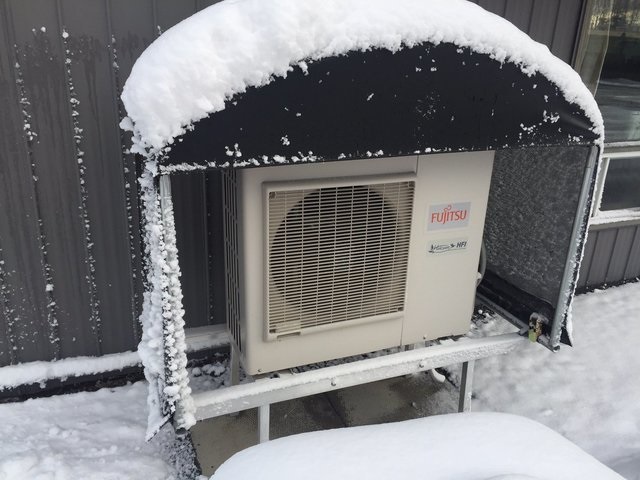



Thanks for leaving us such a wonderful review. We are thrilled that you loved our article; our staff will be happy to read what you wrote. We put customer experience and satisfaction as our priority, and your review reaffirms the hard work we put in every day. So thanks for your kind words and we look forward to seeing you again.
My dad lives in Wisconsin I’m a heating and air guy in California
I’m going to be installing a mini ductless 2 ton set up for him for his cabin. Will a heat pump work when it’s -5 degrees?
Wesumland1977@gmail.com
Thanks Wes for visiting our website. You can visit our Expert page, where you can find numerous experts, who can help you solve your issue. Then you can also Request for Quotation for your desired device in our Equipment page.
Very informative. and thank you. I live in Long Island NY and my central system is old and inefficient (I was told) . It’s due for a change. I sell solar and currently looking to partner with a mini split heat pump seller to promote both
QUESTIONS:
Where is the expert page that you mention in your reply to Wes?
Also, I am slightly confused though 1) you state “ The optimal temperature range is for conventional mini split heat pump operation is over 25-30 degrees Fahrenheit. As the temperature goes down to 40 degrees, the heat pump starts to lose efficiency and is no longer the most efficient heating method once the temperatures go down to 25 to 30 degrees. ”
A)how is it optimal at over 25 to 30° but loses efficiency when going down 40°? No longer efficient went down to 25 to 30°?
2) also, Am i interpreting this correctly,
An Inverter-driven, mini split heat pump (is best for cold climates). and is different than a Mini Split Cold Climate air source Heat Pump. ( not so good for colder climates)??
Thank you and maybe (I hope) I am not the only one confused by this.
We appreciate you checking out our page! You may discover a wide selection of pumps for every industrial use on our Industrial Equipment website. Besides, visit our expert page to get input on your problem from hundreds of qualified individuals.
Giovanni – yes the article is good but confusing and could be much better. 🙂 I am originally from NYC and Westchester. I currently live in CT further north. I bought a house which needed a new furnace and had no central air. I spent 1 year researching and digesting buying a mini split for my home to replace an old oil burning furnace and to get new central air. Through Costco to make a purchase they sent a normal local heating dealer to my house to discuss it. He said a mini split wouldn’t heat my home and recommended a 15k gas furnace with central air conditioning. I followed up with other heating dealers and got the same reaction. My research showed the opposite. I research all the brands and was mostly dealing with “Blueridge” for a year but just before making the purchase I luckily stumbled on “Senville” I recommend looking at both brands. I am glad I went with Senville, Canadian Company I can’t say enough good things about them. You want to buy a “hyper heat” unit for cold weather. We just had a real cold night 5F and the electrical was out here and I was relooking up the specs for my unit they work with 75% efficiency at -22F, the only reason I stumbled on this site and your comment. 🙂 The first year the system was installed oil was cheap (pandemic) so I filled up my two oil tanks (old furnace as back up) I have never needed to use the furnace – all those heat dealers were wrong. Total cost of the system using local contractor with mini split install experience was around 4k for the units 4 air units with a 4ton compressor/inverter that can handle 5 ( i can always add a unit) and 1.5k installation for a total of $5500. House is 1600 sq/ft.
Regarding solar and heat pumps, the correct way to do solar is to make sure your electric usage is the most efficient and uses the most electricity to run your house as possible instead of gas and oil. The main way to do this is with heat pumps so your on the right track! My house is all electric except for the oil furnace back up (lol). I have and induction stove top and heat pump hybrid electrical hot water heater (cost $6-11/month) along with the mini split heat/ac. I just need to replace my dryer with a heat pump one. I currently don’t have solar. Good luck – stick with pursuing the mini split!